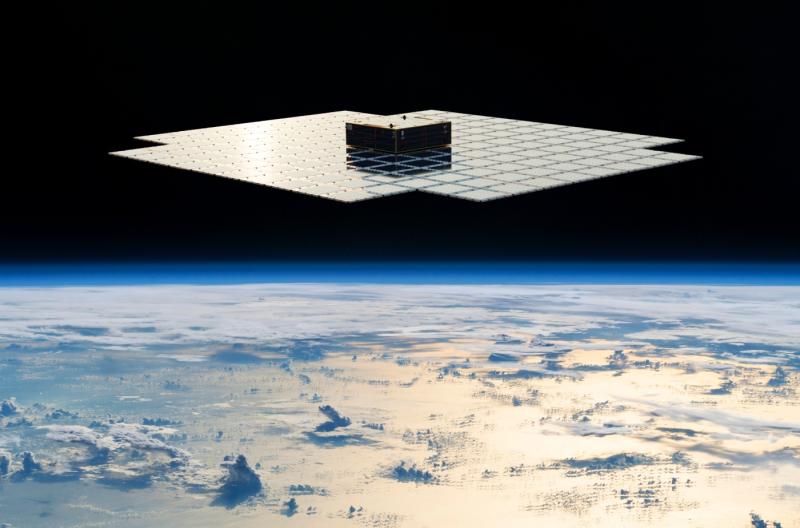AST SpaceMobile, a competitor to Starlink, has begun deploying giant Internet satellites in orbit.


Last month, AST SpaceMobile successfully launched five of its BlueBird satellites into low-Earth orbit using rival SpaceX’s Falcon 9 rocket. They are designed to provide high-speed Internet to standard smartphones anywhere in the world. The deployed antenna area of each BlueBird spacecraft is a record 65 m2. This antenna size makes it possible to reduce the total number of satellites in orbit.


Image source: AST SpaceMobile
Today, AST SpaceMobile CEO Abel Avellan posted on social media X an image taken from one of the BlueBird satellites with the comment “The first BlueBird is getting ready to go.” AST SpaceMobile’s first priority is to begin testing the satellites’ cellular communications capabilities in December together with its two main partners, AT&T and Verizon.
The company is ahead of schedule, Avellan said, and BlueBird’s satellites have the largest-ever commercial spacecraft antennas, measuring 65 square meters, specifically designed to deliver cellular broadband from space. “Size matters!” – said Avellan.
At this time, the FCC has only granted AST SpaceMobile a limited license to monitor and control the BlueBird constellation. The company has yet to receive regulatory approval to test and commercialize the satellites to transmit data to standard consumer phones.
Despite the record-breaking antenna size, AST SpaceMobile will have to launch dozens, if not hundreds, of BlueBirds to provide reliable satellite coverage. BlueBird’s first five satellites can only provide two 15-minute coverage windows per day in the United States.
Ultimately, SpaceMobile’s AST constellation will include 168 spacecraft, some of which will be significantly larger than the current BlueBirds. The company has already begun production of 17 BlueBird Block 2 satellites, which will receive antennas with an area of 223 m2. “We’re just getting started,” Avellan noted during the AST SpaceMobile launch livestream. “Our next generation of satellites will be three and a half times larger.”
This news is undoubtedly upsetting to many astronomers and dark sky advocates. The new satellites will be among the brightest objects in the night sky, which astrophysicists say “should give us all something to think about.”
Recent Posts
A demo of Dispatch, a comedy game about a superhero agency from the former developers of Tales from the Borderlands and The Wolf Among Us, has been released on Steam
Developers from the American AdHoc Studio, founded by former Telltale Games, Ubisoft and Night School…
Digma DP-FHD800A LCD Full HD Projector Review: A Modern Approach
When you think about a home theater, you immediately imagine bulky projectors with a bunch…
Lian Li Introduces HydroShift II LCD-C Liquid Cooling System with 360mm Radiator and Three Configurations
Lian Li has introduced a series of maintenance-free liquid cooling systems HydroShift II LCD-C. It…
Apple: App Store App Developers to Earn $406 Billion in 2024
Amid mounting pressure from U.S. regulators, Apple has released the results of an independent study…
ASRock Admits Its Motherboards Break Ryzen 9000 Processors
Following a report from YouTube channel Tech Yes City that ASRock linked Ryzen 9000 processor…
Apple to Change OS Numbering: iOS 26 to Come This Year Instead of iOS 19
Apple is preparing a large-scale rebranding of its line of operating systems. This was reported…